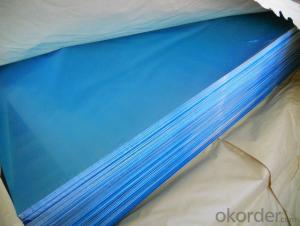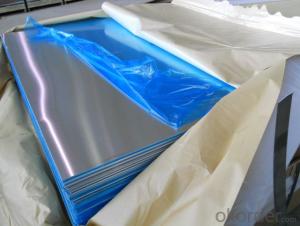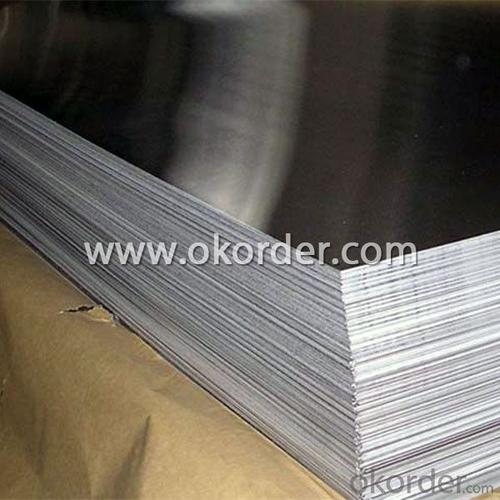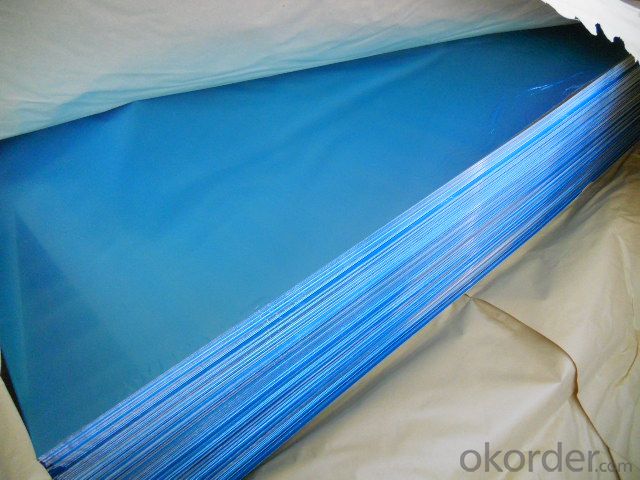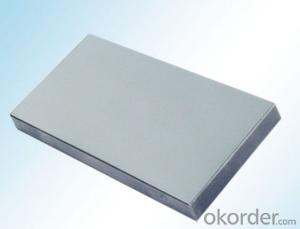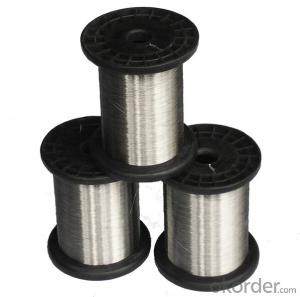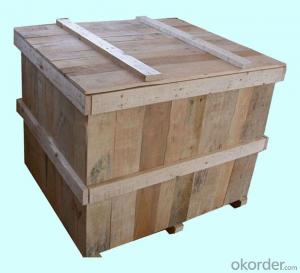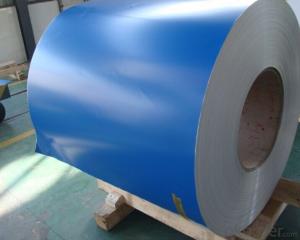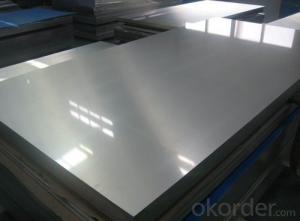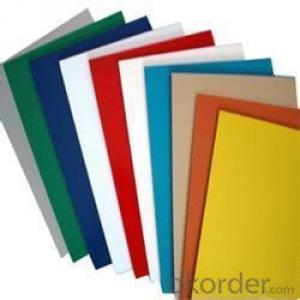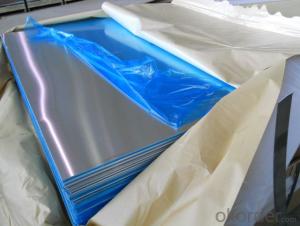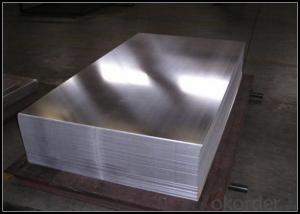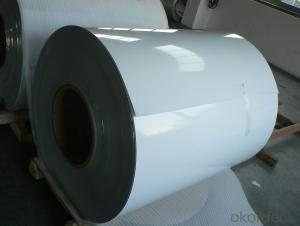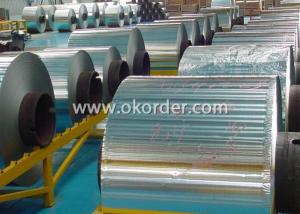Painted Aluminum Sheets for Different Curtain Walls - Oregon
- Loading Port:
- Shanghai
- Payment Terms:
- TT or LC
- Min Order Qty:
- 5 m.t.
- Supply Capability:
- 100000 m.t./month
OKorder Service Pledge
OKorder Financial Service
You Might Also Like
1.Structure of Aluminium Sheets for Different Curtain Walls Aluminum coils are widely used in curtain walls including solar energy curtain wall, unitized curtain wall, stick curtain wall, semi-unitized curtain wall, point-fixing curtain wall, full-glass curtain wall, double-skinned energy-saving curtain wall, steel structure curtain wall, etc. Aluminium Coils for Different Curtain Walls are good at ductility, heat conductivity, anti-corrosion and moisture resistance. They are widely used in roofing, electronics, instruments, lighting decoration, packing, decoration, curtain wall, sandwich panels, boats, etc. 2.Main Features of Aluminium Sheets for Different Curtain Walls •High intensity •Easy to be processed and shaped •Weather resistance •Anti-pollution & environment protection 3. Aluminium Sheets for Different Curtain Walls Images 4.Specification of Aluminium Sheets for Different Curtain Walls Alloy: AA1×××; AA3×××; AA5×××; AA8××× Temper: H14; H16; H18; H22; H24; H26; H32; O; F Thickness: 0.2mm-100mm Width: 30mm-1700mm Standard: GB/T 3880-2006 5. FAQ A.What about inspections to guarantee quality? For each order for Aluminum Sheets, we will arrange strict inspection for raw materials, inspection during production and inspection for finished goods. With requirement of customers, we also can arrange the third party inspection. B.What about delivery? We will put order for Aluminum Sheets in production schedule after order gets confirmed against copy of TT or L/C. Normally it takes about one month for production. Exact shipment schedule is different based on different sizes and quantity. C.What is the MOQ? 5 tons for each size. D. Where have you exported aluminium sheets? We have exported aluminum sheets to many countries. Main markets include South East Asia, Middle East, North America, South America, etc. 
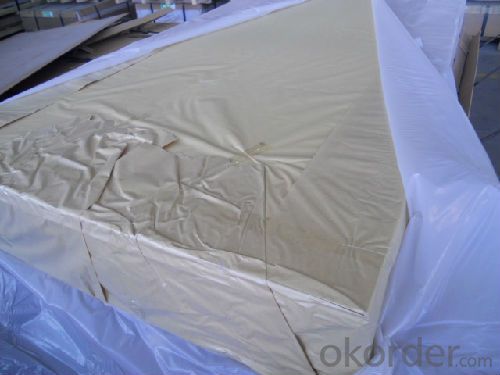
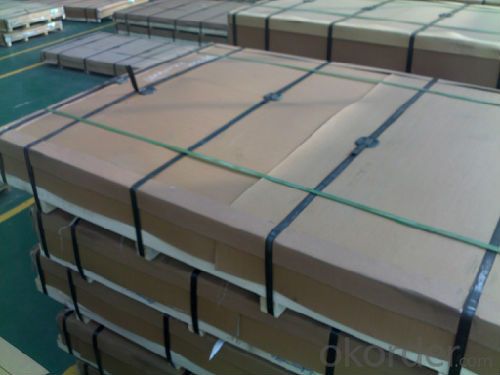
- Q: Is it possible to incorporate windows made from recycled materials into a construction project?
- <p>Yes, you can use windows made from recycled materials in your project. There are eco-friendly windows available that are manufactured using recycled glass or other sustainable materials. These windows can offer similar performance to traditional ones while reducing the environmental impact of your construction. It's important to check the quality and certifications of the recycled windows to ensure they meet your project's requirements.</p>
- Q: Can 101 aluminum sheets be stamped or engraved?
- Yes, 101 aluminum sheets can be stamped or engraved. Aluminum is a versatile material that can be easily manipulated using various techniques. Stamping involves pressing a design or pattern onto the surface of the aluminum sheet, while engraving involves cutting or incising a design into the sheet. Both processes can be performed on aluminum sheets, including those made of 101 aluminum alloy. However, it is important to consider the thickness and hardness of the sheets, as these factors may affect the quality and clarity of the stamped or engraved design.
- Q: Is it possible to use aluminum sheets as a material for the exterior walls of residential buildings?
- <p>Yes, aluminum sheets can be used for exterior walls in residential buildings. They offer several advantages such as durability, resistance to weather and corrosion, and low maintenance. Aluminum is lightweight, which can reduce structural load, and it can be easily shaped and installed. Additionally, it has good thermal performance and can be combined with insulation for energy efficiency. However, it's important to consider the aesthetic appeal, as aluminum may not match the traditional look of some residential buildings, and ensure it meets local building codes and standards.</p>
- Q: This question asks for a comparison of the benefits and drawbacks of using aluminum sheets as a roofing material.
- <p>Aluminum sheets for roofing offer several advantages, including durability, resistance to rust and corrosion, lightweight nature, and energy efficiency due to reflective properties. They are also easy to install and maintain, and can be recycled, making them environmentally friendly. However, there are some disadvantages such as being more expensive than some other roofing materials, potential for denting if not properly installed, and noise issues during heavy rain or hail due to their lightweight nature. Additionally, they may require more frequent replacement compared to some other materials.</p>
- Q: my grandpa gave me a family harloom, a 1971 Honda Trail 90, after it sat in a shed for a good 30 years. i have got most everything in tip top shape except for the polished aluminum has become lightly tarnished. and because i am a perfectionist
- You can use furniture stripper to dissolve the clear-coat. Then you can polish up the parts using Simichrome or other chrome polish. Then spray on a new clear-coat. I used a Harley-Davidson product in the past (on a Honda) with very good results. Note that you may get a finish which is actually glossier than the original Honda finish. You may prefer that, or you may be more interested in replicating the original finish. It all depends on what you want, and how far you go with the polishing. In my case, I ended up having the parts professionally triple chrome plated several years later for a really custom look (once I had the money to do it). BTW, your cases are made of an aluminum alloy. Apparently, pure aluminum does not tarnish, but is not considered strong enough.
- Q: What is the melting point of 101 aluminum sheets?
- Approximately 660 degrees Celsius or 1220 degrees Fahrenheit is the melting point of 101 aluminum sheets.
- Q: In which autocomponents usage of aluminium is better or otherwise?
- Aluminium is lighter as well as stronger than CI. Thats the reason most of the Automobile manufacturers use Aluminium for car bodies while they use cast iron for the underframes and internal chassis....NMN
- Q: Are aluminum sheets suitable for medical applications?
- Yes, aluminum sheets are suitable for medical applications. Aluminum is a lightweight and durable material that is resistant to corrosion, making it suitable for medical equipment and devices. It is commonly used in the production of medical instruments, diagnostic imaging systems, and surgical trays. Additionally, aluminum sheets can be sterilized easily, further enhancing their suitability for medical applications.
- Q: Are the aluminum sheets suitable for manufacturing chemical storage cabinets?
- Yes, aluminum sheets are suitable for manufacturing chemical storage cabinets. Aluminum is a strong and durable material that is resistant to corrosion, making it ideal for storing and protecting chemicals. It is also lightweight, which makes transportation and installation easier. Additionally, aluminum is non-reactive with most chemicals, ensuring the safety of the stored substances. Overall, aluminum sheets provide a reliable and efficient solution for manufacturing chemical storage cabinets.
- Q: Can aluminum sheets be used for kitchen backsplashes?
- Kitchen backsplashes can indeed utilize aluminum sheets. Aluminum, a versatile and durable material, finds common use in various applications, including kitchen backsplashes. It boasts several advantages, such as its lightweight nature, resistance to corrosion, and ease of cleaning. Aluminum sheets are also easily cut and installed, making them a favored choice for contemporary kitchen designs. Moreover, they come in a wide array of finishes and colors, allowing homeowners to discover a style that complements their kitchen décor. In conclusion, aluminum sheets serve as an exceptional option for kitchen backsplashes, thanks to their practicality, aesthetic appeal, and ability to withstand the demands of a bustling kitchen environment.
Send your message to us
Painted Aluminum Sheets for Different Curtain Walls - Oregon
- Loading Port:
- Shanghai
- Payment Terms:
- TT or LC
- Min Order Qty:
- 5 m.t.
- Supply Capability:
- 100000 m.t./month
OKorder Service Pledge
OKorder Financial Service
Similar products
Hot products
Hot Searches
Related keywords

